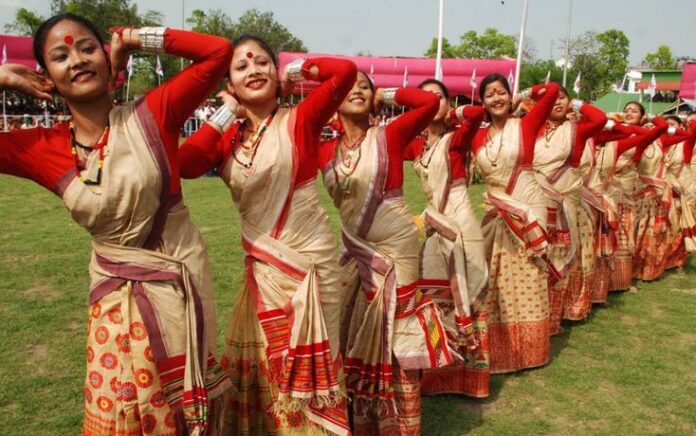Introduction
The Mising Tribe of Assam is nestled in the picturesque Brahmaputra Valley of Assam, the Mising tribe, also known as Miris. They represent a unique and vibrant thread in the rich cultural fabric of India. With a rich heritage, age-old traditions, and a deep connection to nature, the Misings have carved a niche for themselves in the story of Assam. In this article, we delve into the fascinating world of the Mising tribe, exploring their traditions, lifestyle, and the challenges they face in preserving their unique identity amidst the currents of modernity.
Historical Roots
The Mising tribe traces its origins to Tibeto-Burman ethnic groups and has a distinct language, Mising, which belongs to the Tani branch of the Sino-Tibetan language family. Historically, they are known for their expertise in weaving, a skill that has been passed down through generations, creating intricate designs that adorn their traditional attire and homes.
Traditional Lifestyle and Culture
The Misings have a deeply rooted agricultural lifestyle. They practice both wet and dry rice cultivation, with the fertile plains of the Brahmaputra providing an ideal environment for their agricultural pursuits. Their villages, typically situated near riverbanks, reflect a harmonious coexistence with nature. Bamboo and thatch huts dot the landscape, showcasing their eco-friendly approach to living.
One of the most distinctive aspects of Mishing culture is their festivals. Ali-Aye-Ligang and Porag are celebrating with great enthusiasm, featuring traditional dances, folk songs, and rituals that highlight their agricultural heritage and reverence for nature. These festivals are not only a celebration of their rich cultural identity but also a testament to their close-knit community bonds.
Challenges and Resilience
The majority of the people are still living in flood-affected and isolated areas with old-age traditions and modern civilization has practically left them untouched in many aspects. In the face of modernization, the Mising tribe, like many indigenous communities, faces numerous challenges. Encroachment on their ancestral lands, lack of access to education and healthcare, and the erosion of their traditional way of life pose significant threats. However, the Misings exhibit remarkable resilience. NGOs and governmental initiatives are working alongside the community to address these challenges, promoting education, healthcare, and sustainable livelihoods to empower the Mising people.
Preserving Heritage for Future Generations
Efforts are underway to document and preserve the unique cultural heritage of the Mising tribe. Initiatives focusing on reviving traditional crafts, promoting eco-tourism, and preserving their language and folklore are crucial in ensuring that the rich legacy of the Misings continues to thrive.
Conclusion
The Mising tribe of Assam stands as a testament to the beauty of cultural diversity and the resilience of indigenous communities. Their unique way of life, deeply intertwined with nature, is a reminder of the importance of preserving traditional knowledge and heritage in our rapidly changing world. As awareness grows and concerted efforts continue, the Mising people are poise to not only preserve their cultural legacy but also inspire generations to come with their unwavering spirit and rich cultural heritage.




